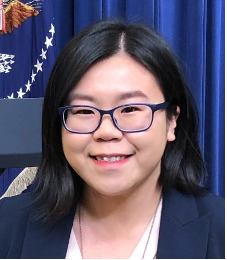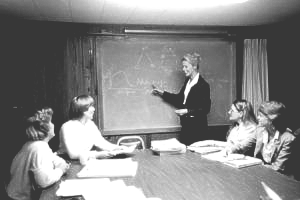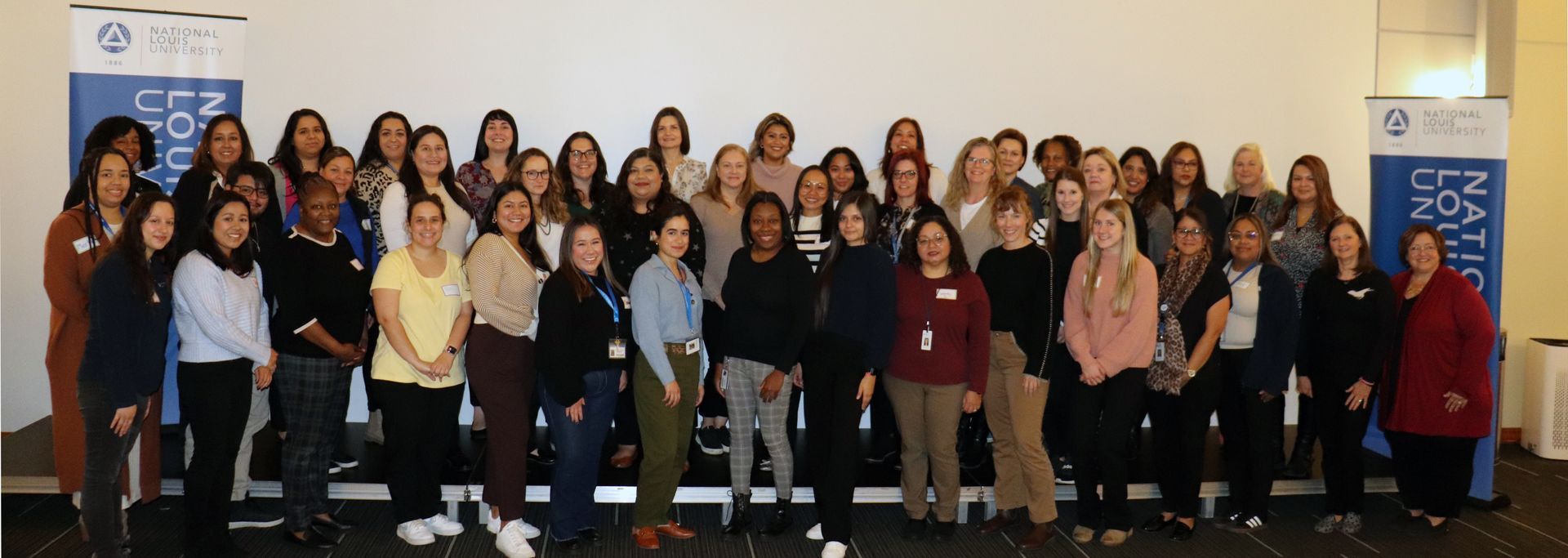BY Marie Masterson, Ph.D. | April 20, 2021

Sim Loh is a family partnership coordinator at Children’s Village, a nationally-accredited Keystone 4 STARS early learning and school-age enrichment program in Philadelphia, Pennsylvania, serving about 350 children. She supports children and families, including non-English speaking families of immigrant status, by ensuring equitable access to education, health, employment, and legal information and resources on a day-to-day basis. She is a member of the Children First Racial Equity Early Childhood Education Provider Council, a community member representative of Philadelphia School District Multilingual Advisory Council, and a board member of Historic Philadelphia.
Sim explains, “I ensure families know their rights and educate them on ways to speak up for themselves and request for interpretation/translation services. I share families’ stories and experiences with legislators and decision-makers so that their needs are understood. Attending Leadership Connections will help me strengthen and grow my skills in all domains by interacting with and hearing from experienced leaders in different positions. With newly acquired skills, I seek to learn about the systems level while paying close attention to the accessibility and barriers of different systems and resources and their impacts on young children and their families.”
This document may be printed, photocopied, and disseminated freely with attribution. All content is the property of the McCormick Center for Early Childhood Leadership.
During the assessment team’s interactions with early childhood programs, we are often inspired by leaders who are highly organized and take expert responsibility for the orderly management of time, spaces, updated records, and program processes. Their advanced planning, preparation, pride in organization, and confidence in their program are evident. These leaders really stand out. Their staff mirror their positive energy.
We also see inspirational leaders who engage, motivate, and guide staff with a clear sense of purpose. They recognize their central role in fostering a positive organizational climate. We encounter programs that are strengthening their impact during difficult times by using virtual technologies to connect with families. They are using this time of change to help their staff grow professionally. They have developed a vision for inclusive practices with the goal of advancing equity and removing barriers for families and children.
This important shift is motivated by the National Association for the Education of Young Children (NAEYC) Revised Statement on Developmentally Appropriate Practice. The statement offers guiding principles and effective strategies leaders can build on to strengthen the effectiveness and impact of programs. It explains that the organizational health and effectiveness of an early childhood program is anchored in the context of families, cultures, languages, abilities, and experiences, including the assets and contributions of its members. This strengths-based approach places a priority on the well-being of each child, family, and staff member and fosters a sense of belonging and joyful engagement within a caring community.
At other times, we discover programs that are struggling with overwhelming day-to-day challenges. This makes sense. All of us face moments when tasks feel overwhelming and obstacles appear insurmountable. We face moments of indecision and ask ourselves, “Is this something we have the ability to carry out? How will we find the time and energy to manage this stress over time?” These are thoughts that can paralyze our thinking and actions. As we inch forward, we don’t always notice the progress we are making. But over time, we look back and see that small steps and consistent habits have accomplished great things.
An important tool for managing change is building a strong infrastructure. Infrastructure for a community includes transportation, communication networks, water, and electric systems. Infrastructure for our professional lives includes the management of the fundamental tools, technology, services, and systems that are necessary for the most effective program functioning. When challenges increase, leaders may struggle to maintain an effective system for these management tasks. Sometimes, they simply underestimate how much time infrastructure planning requires.
For some of us, being highly organized was drilled into our upbringing. But for most adults, self- and life-management skills require practice. The habits that matter the most in leadership often require extended attention and purposeful determination. This trait of intentionality is an essential lens through which we can view our relationship with the situations and challenges we encounter. Intentionality includes the ability to make decisions and responses that are aligned with one’s values and goals. With intentionality, leaders have the ability to shape the culture of organizations and become more effective in their work.
Rebalancing and Increasing Your Impact
In the midst of challenging times, there are many ways to rebalance work, keep a healthy perspective, and thrive. Some approaches are basic and practical, while others require adjustments related to management, planning, and patterns of thinking. The following strategies can help you make small changes that can have big impact.
1. Set aside specific a specific time each week to manage infrastructure.
A leader’s infrastructure includes deliberate management of time, technology, and obligations, like keeping lists, organizing spaces, and reserving time to invest in important relationships and tasks. Keep a daily list of priorities. Add deadlines and details to the calendar. Organize and file digital and hard-copy records. Below are choices that can take your skills to the next level:
- Identify “to do” items that are currently outside of your individual capability and resources. Ask for assistance or delegate those tasks to someone with skill and ownership.
- Keep a written list of challenges. This honest inventory will help you consider all your options, think outside the box, and plan effectively to create solutions.
- Make decisions with input. Great minds working together are much more insightful than one mind alone. Include staff in decisions that relate to them. Ask for input and ideas from colleagues you trust.
2. Embrace change.
Bob Iger, former executive chairperson of the Walt Disney Company, said that when you encounter life interruptions, these should never be considered a temporary speed bump or a brief hurdle to overcome. Instead, he suggests that leaders count on facing constant disruptions. Seeing and embracing disruptions as part of normal life can keep people from being reactive. The person and disruption in front of you are not a sideline from your work. They are the most important priority of your work. They are your daily opportunity to be a positive influence in the lives of others and in the outcomes of circumstances.
3. Examine your mindset.
Perceptions and circumstances quickly change, so stay focused on your influence as a leader and the values that guide your work. You may go to sleep with a problem on your mind and wake up in the morning with an entirely new insight or idea. You may hold strong views about a situation, but discover completely new viewpoints while talking with a trusted colleague. Problems and challenges are opportunities to innovate. Give great ideas time to grow.
4. Evaluate your self-talk.
Neuroscience shows that negative and critical thinking becomes a pattern; whereas, positive thinking shifts the neural pathway and leads to the habit of constructive optimism. The goal is to use a realistic lens to evaluate and to think clearly. Listen to the words you choose. What messages are you communicating? Do your private thoughts involve berating or scolding yourself or others? These persistent inner scripts may contain unspoken judgments, such as, “That was so irresponsible…” or “This is dreadful…” However, those messages keep you from moving quickly forward to positive solutions.
5. Reframe initial responses.
Reframing is a coping strategy that helps to balance thinking and shift your focus to constructive and self- and other-honoring affirmations. State the current situation clearly and then describe a positive outcome or opportunity. “We have this challenge, and we are going to work together to figure it out.” “This seems impossible now, so let’s brainstorm what we can do.” Practicing reframing and activating the habit of evaluative thinking can reorient the outcome. Here are some steps that can be helpful:
- What led up to this situation, and how could I/we have intervened sooner?
- What feedback did I receive from others that I really need to hear?
- What planning and procedures might keep this from happening again?
- What resources and strategies are needed now to solve this problem?
- What next steps can we take to move things forward?
6. Manage stress proactively.
Adopt healthy decisions to maintain your well-being and to help your team manage stress. Remain proactive. Don’t wait until you are “losing it” to ask for help. Take responsibility for your situation and own the need to make changes. The act of taking action can overcome discouragement. Breathe. Decompress. Eat nutritious food. Walk. Give yourself the gift of sleep. Encourage well-being and healthy habits for your staff and families.
7. Be an intentional role model.
An important goal as a leader is to model and promote resilience, demonstrating how to rebound when challenges come your way. When times are difficult, program staff and families look to leaders for confidence. When they hear positive affirmations like, “We can do this together,” they more readily adopt that flexible and willing attitude. When staff experience or hear about concerns, they feel reassured when these are paired with effective problem-solving strategies. Leaders set the tone by the way they respond to crises and change.
8. Use times of challenge as an opportunity to grow.
Try new habits like journaling and consistent reading. If you don’t have a professional mentor, find one. If you aren’t yet a mentor to someone else, seek the opportunity to encourage and support others in the field. Take an online course like Aim4Excellence or attend a virtual conference. Ask colleagues to meet with you virtually once a month for a book study. Join or organize a community director’s roundtable to share your leadership journey and learn from others. Each of these options can energize your thinking and provide new knowledge and insight to strengthen your leadership effectiveness.
Daily challenges and seasons of change offer the opportunity to innovate, grow, and become more effective. The McCormick Center for Early Childhood Leadership offers a range of professional development trainings and consultation to help you make the most of your program’s resources and strengthen your organizational impact. If you are looking for practical, focused support for your leadership journey, check out Building on Whole Leadership: Energizing and Strengthening Your Early Childhood Program. You will discover many inspirational stories and useful ideas to inspire and guide your growth.
Marie Masterson, Ph.D., is the Director of Quality Assessment at the McCormick Center for Early Childhood Leadership at National Louis University.




